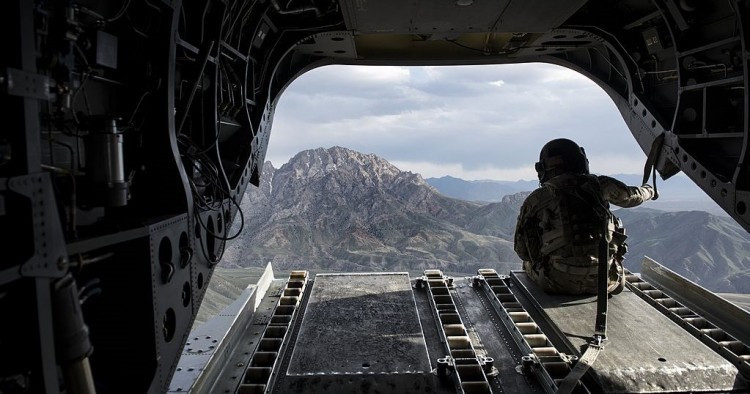After the attacks on Sept. 11, 2001, the world was on the side of the United States. The Taliban were an extremist organization that brutalized the Afghan people and provided a safe haven for al-Qaeda, the group that planned and carried out the attacks. This group spawned the Islamic State and several affiliates, including al-Shabaab, Ansar al-Islam, al-Nusra Front, and others. These terrorist groups are in many more countries than they were on that horrible day in 2001.
Although there were very legitimate concerns about starting the war in Iraq, almost all of our political and policy leaders were unified in the belief that Afghanistan was a war that had to be fought. The initial success was achieved with a limited number of forces from the CIA, the U.S. military (especially special operations), and our partners in the Northern Alliance. In the opinion of many military experts and historians, it was a model for how to conduct a large-scale military operation with limited casualties and expenditure of resources.
But things soon changed, and we embarked on a massive nation and capacity-building effort that encompassed every aspect of government, from the military to intelligence, diplomacy, agriculture, etc. According to Brown University, the collective efforts in Afghanistan cost a total of $2.313 trillion.
There have been many estimates of what the United States spent on weapons, ammunition, and equipment for Afghan security forces, ranging from $30 to $80 billion depending on how you calculate it. The difference is large, but I think it is safe to say it was a lot and way too much to leave in the hands of the Taliban — a group we fought for 20 years and one responsible for the vast majority of U.S. and coalition casualties.
An alternative to this method would be the tactical advantage approach. This approach is defined by using our enabling capabilities (tactical air, combat advisors, and intelligence) to enhance a partner force only to the point of being capable of defeating a common enemy. It does not entail spending excessive amounts of money purchasing advanced weapons systems that they cannot maintain once the U.S. stops funding them.
The efforts with the Northern Alliance in Afghanistan, the Kurdish Peshmerga at the start of the war in Iraq, and the Syrian Democratic Forces in the Defeat-ISIS campaign are examples of this approach. These proved to be very effective in limiting the cost and achieving the preferred military outcome.
In 2014, Henry Kissinger said, “The high probability is if American forces withdraw from Afghanistan and if no alternative international arrangement is made that then the historic contests between the regions and the sects will reappear, the Taliban will re-emerge, and a very complicated and maybe chaotic situation will develop.” The intelligence community assessed that the Taliban would take over if we left without leaving a residual force. One of their assessments, publicly stated by Chairman of the Joint Chiefs of Staff Gen. Mark Milley, was that it could happen as soon as a few weeks after our withdrawal.
From the congressional testimony of Gen. Milley and the Commander of Central Command Gen. Kenneth McKenzie, we learned that they supported the request of the commander of the Resolute Support Mission in Afghanistan, Gen. Austin Miller, to keep a residual force. This force would have preserved what we fought for over two decades and prevented the Taliban from taking over and allowing terrorist groups to operate out of the country (by incompetence or willfully) and destroy all of the advances in human rights.
This and the manner in which we withdrew seriously damaged our reputation with our allies and partners, and it also undermined, at least in part, our stated objectives and priorities in our National Security Strategy. We had significant military capability in a country that borders China and Iran. Now we don’t.
But we are where we are, and the decision cannot be undone. We need to deal with the consequences of the humanitarian crisis it caused and review what we did right and what we did wrong for the benefit of our future efforts.
Although the Afghanistan War Commission was a welcome provision in the National Defense Authorization Act, it is a mistake to exclude those that have actually served in Afghanistan. One does not need to have been there to have an opinion. But to exclude those who have would leave out the very people with the most knowledge of the issues. After all, most retired diplomats, military members, and intelligence officers did serve there, and in the words of a CIA legend, “if they didn’t, they actively avoided it.” This provision should be amended to allow those who have served there or the commission risks being disregarded by all Afghanistan veterans before it even begins.
Mick Mulroy is the former Deputy Assistant Secretary of Defense for the Middle East. He is also a retired CIA Paramilitary Operations Officer in the Special Activities Center and a United States Marine. He is a Non-Resident Senior Fellow for the Middle East Institute, an ABC News National Security Analyst, a Co-founder of Lobo Institute, and on the Board of Advisors for Plato’s Academy in Athens, Greece. The views expressed in this piece are his own.
Photo by BRENDAN SMIALOWSKI/AFP via Getty Images
The Middle East Institute (MEI) is an independent, non-partisan, non-for-profit, educational organization. It does not engage in advocacy and its scholars’ opinions are their own. MEI welcomes financial donations, but retains sole editorial control over its work and its publications reflect only the authors’ views. For a listing of MEI donors, please click here.













